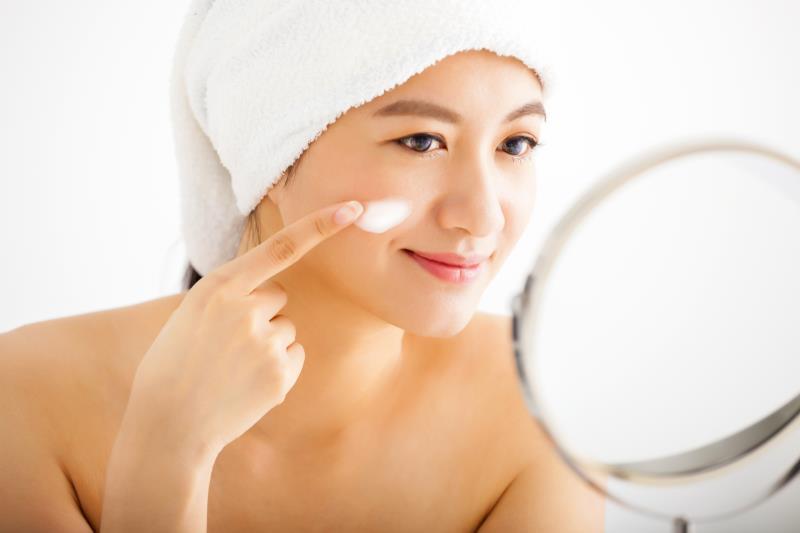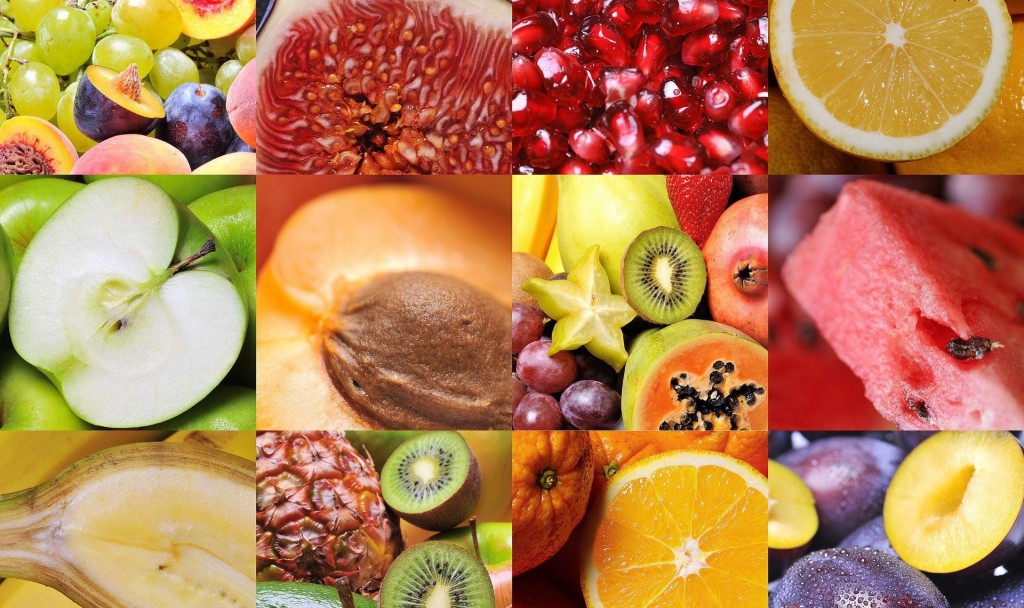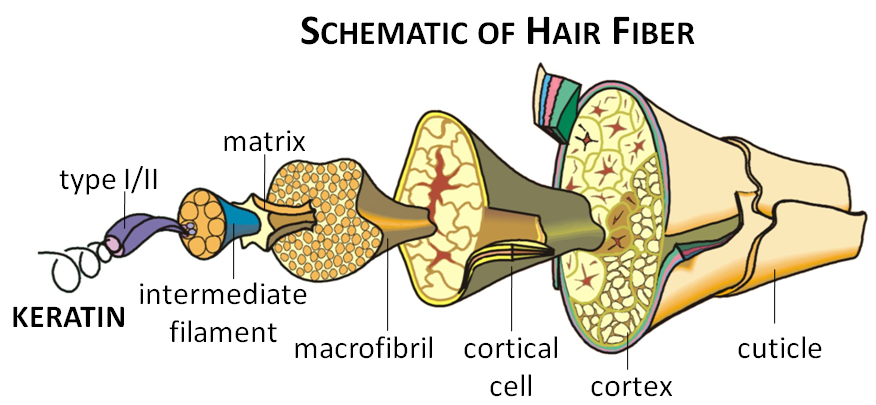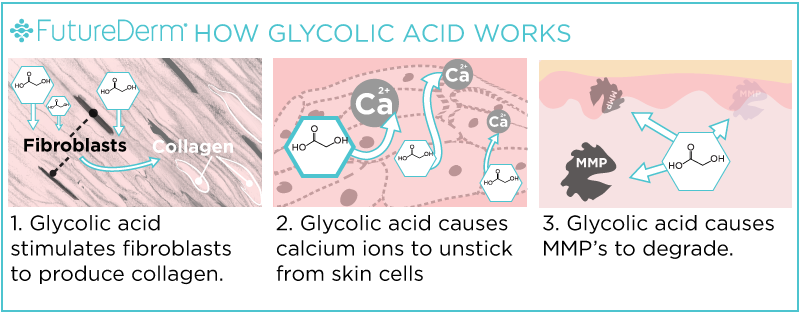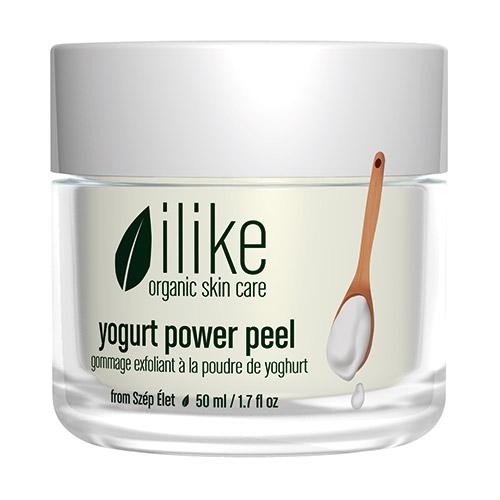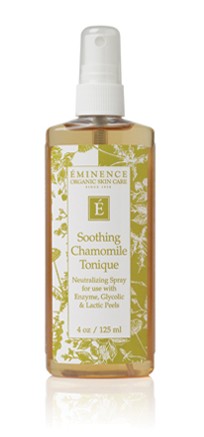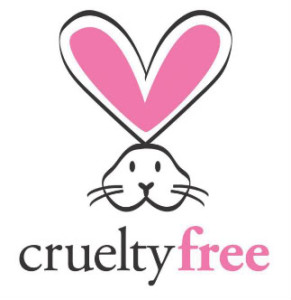Alpha hydroxy acids (AHAs)
Hello and welcome to week 243. Thank you for all your likes and visits we appreciate your time and the attention that you invest in the post. It is yours as much as ours, please share and like if you do so other people can benefit from it also, a big thank you again for your faithful support from all of us at Isabel’s Beauty Blog.
Do you know what Alpha hydroxy acid (AHA) means? We are all exposed to many products in the market that have AHA in them, but for the most part, most people don’t know what this means. The name refers to a class of chemical compounds that consist of a carboxylic acid substituted with a hydroxyl group on the adjacent carbon WOW! that is a lot of names, isn’t it ? They may be either naturally occurring or synthetic. AHA’s are well known for their use in the cosmetics industry. They are often found in products implying to reduce creases and flaws or the signs of mature skin and improve the overall look and feel of the skin by basically activating the body’s response to the AHA’s. In other words aiding the bodies natural resources to renew the skin is a lot like what dermabrasion and Skin resurfacing do. As a matter of fact, it is a form of skin resurfacing.
Here in our blog post what we researched will explain to a very large extent what these chemical compounds do and how to use them, their qualities and their drawbacks when not used properly.
According to https://en.wikipedia.org/wiki/Alpha_hydroxy_acid
A-Hydroxy acids, or alpha hydroxy acids (AHAs), They may be either naturally occurring or synthetic. AHAs are well known for their use in the cosmetics industry. They are also used as chemical peels available in a dermatologist’s office, beauty, and health spas and in home kits, which usually contain a much lower concentration of around 4%. Although there is evidence for their effectiveness,cosmetic manufacturers have made exaggerated claims of performance and oftentimes the source AHA is not of real quality or the right concentration Many well-known (AHAS) α-hydroxy acids are useful building blocks in organic synthesis: the most common and simple are glycolic acid, lactic acid, citric acid, mandolin acid.You can check the pink links for the complete definition of the different acids.
Cosmetic applications
Understanding skin structure and cutaneous aging and oxidation are helpful to the description of the topical action of alpha hydroxy acids( AHAs). Human skin has two principal components, the avascular epidermis, and the underlying vascular dermis. Natural Cutaneous aging, while having epidermal concomitants, seems to involve primarily the dermis and is caused by intrinsic and extrinsic aging factors and that is how is determined by science at this time.
AHAs are a group of organic carboxylic compounds. AHAs most commonly used in cosmetic applications are typically derived from food products including glycolic acid (from sugar cane), lactic acid (from sour milk), malic acid (from apples), citric acid (from citrus fruits) and tartaric acid (from grape wine) so as you see these are very reliable sources. For any topical compound to be effective, including AHA, it must penetrate into the skin where it can act on living cells so with that said AHA’s are great used with the Needle pen or other mechanical exfoliation procedures that penetrate the first layer of the Skin we will talk about the process further in the Post. Bioavailability (influenced primarily by small molecular size) is an important factor in a compound’s ability to penetrate the top layer of the skin. Glycolic acid, having the smallest molecular size, is the AHA with the greatest bioavailability and penetrates the skin most easily; this largely accounts for the popularity of this product in cosmetic applications, is important to do research and check the percentage and what the other ingredients are that can counter act the potency and effectiveness of the AHA’s work, when in doubt do a patch test or consult your beauty expert or if you happend to have more serious issues with your skin please consult your Dermatologist before using AHA’s.
Natural sources of AHA’s
Epidermal effect
AHA’s have a profound effect on keratinization; which is clinically detectable by the formation of a new stratum corneum. It appears that AHAs modulate this formation through diminished cellular cohesion between corneocytes at the lowest levels of the stratum corneum.
Keratin
kɛrətɪn is a family of fibrous structural proteins. Keratin is the protein that protects epithelial cells from damage or stress that has potential to kill the cell. It is the key structural material making up the outer layer of human skin. It is the key structural component of hair and nails, and it provides the necessary strength and toughness for masticatory organs, such as the tongue and the hard palate, is pretty strong!. Keratin monomers assemble into bundles to form intermediate filaments, which are tough and form strong unmineralized tissues found in reptiles, birds, amphibians, and mammals, Wow!. The only other biological matter known to approximate the toughness of keratinized tissue is chitin.
Chitin: A tough, semitransparent substance that is the main component of the exoskeletons of arthropods, such as the shells of crustaceans and the outer coverings of insects. Chitin is also found in the cell walls of certain fungi and algae.
Keratin filaments are abundant in keratinocytes in the cornified layer of the epidermis; these are cells which have undergone keratinization.
•Like the α-keratins in the hair (including wool), horns, nails, claws and hooves of mammals.
•In the harder β-keratins found in nails and in the scales and claws of reptiles, their shells (Testudines, such as tortoise, turtle, terrapin), and in the feathers, beaks, claws of birds and quills of porcupines.
Skin Structure and function
Stratum corneum
The stratum corneum Latin for ‘horny layer’ is the outermost layer of the epidermis, consisting for the most part of dead cells (corneocytes). This layer is composed of 15-20 layers of flattened cells with no nuclei and cell organelles.,as per wikipedia. The stratum corneum is composed of three lipid components: ceramides, cholesterol, and fatty acids.
The purpose of the stratum corneum is to form a barrier to protect underlying tissue from infection, dehydration, chemicals and mechanical stress so consequently the layer that is most exposed to exterior damage and oxidation and other common intruders. Desquamation, the process of cell shedding from the surface of the stratum corneum, balances proliferating keratinocytes that form in the stratum basale. These cells migrate through the epidermis towards the surface in a journey that takes in general approximately fourteen days, we should keep in mind that everybody is different so this count is a general estimate.
During cornification, the process whereby living keratinocytes are transformed into non-living corneocytes, the cell membrane is replaced by a layer of ceramides which become covalently linked to an envelope of structural proteins (the cornified envelope) did you know that? I just learned it myself. This complex surrounds cells in the stratum corneum and contributes to the skin’s barrier function.
Dermal effects
AHAs with greater bioavailability appear to have deeper dermal effects. Glycolic acid, lactic acid,, and citric acid, on topical application to photodamaged skin, have been shown to produce increased amounts of mucopolysaccharides and collagen and increased skin thickness without detectable inflammation, as monitored by skin biopsies.
AHAs are derived naturally from various plant sources and from milk, but 99% of the AHAs used in cosmetics are synthetically derived. For most part in low concentrations (less than 3%) Drs and licensed estheticians may use different strenghts and they are train to recognize the different applications of it,is of great importance to fallow instructions so you don’t harm your self. AHAs work as water-binding agents. At concentrations greater than 4% and in a base with an acid pH of 3 to 4 ( crucial to test or know the PH you can do this action with a PH strip abaliavle in any drugstore), these ingredients can exfoliate skin cells by breaking down the substance in skin that holds skin cells together.(Please follow instructions and remember more is not necessary better and do a patch test)
The “glue”per say,that hold together the cells of the skin and the other epithelial tissues of the body are the adherens junctions.
The most effective and well-researched AHAs are glycolic acid and lactic acid. Malic acid, citric acid, and tartaric acid may also be effective, but are considered less stable and less skin-friendly.
A word of caution:
AHAs may irritate mucous membranes and cause irritation so is important to do a patch test and consult your health provider. However, AHAs have been widely used for therapy of photodamaged skin, and also have been reported to normalize hyperkeratinization (over-thickened skin) and to increase viable epidermal thickness and dermal glycosaminoglycans content, all of which lead to radiant healthy skin.
There is a vast amount of research that substantially describes how the oxidation, stress and maturing process affects skin and demonstrates that many of the unwanted changes can be improved and many times erase by topical application of AHAs, including glycolic and lactic acids. Because AHAs exfoliate sun damaged cells from the surface of skin, and because this layer imparts some minimal sun protection for skin, there is a risk of increased sun sensitivity when using an AHA. However, wearing a sunscreen daily eliminates this risk and creates protective shield, read the ingredients on your Sun screen we prefer Organic.
Tip: AHAs are of little benefit when added to rinse-off products, as their contact with skin is too brief for them to function as exfoliants or absorb into the skin in such a small amount of time.
from: http://dermatology.about.com/cs/skincareproducts/a/aha_2.htm
Some guidelines to consider when trying to decide which alpha hydroxy acid formulation to use:
It is best to pick one product that contains the proper formulation of alpha hydroxy acid to use as your exfoliant, and then choose other skin care products or cosmetics that don’t contain alpha hydroxy acids to reduce the risk of skin irritation.
Using an alpha hydroxy acid in a moisturizer base may be the best combination of products T the same time a serum before the moisturizer is another great source.
Cleansers that containing alpha hydroxy acids are not very effective because the alpha hydroxy acid must be absorbed into the skin to work. Cleansers are washed off before this absorption occurs doing so it defeats the purpose.
At this time there are no effective products that combine alpha hydroxy acid and sunscreen, because sunscreen is not stable at the pH required to make the alpha hydroxy acid effective, like we say before PH is very important in this.
Sunscreen MUST be applied liberally when using an alpha hydroxy acid product. The sunscreen should have an SPF of at least 15 for UVB protection and contain avobenzone, titanium dioxide, or zinc oxide for UVA protection.
Alpha hydroxy acids work best in a concentration of 5% to 8% and at a pH of 3 to 4.
Unfortunately, cosmetic manufacturers are not required to provide concentration information on the label so this is a crucial information that you can research. As a general rule of thumb, having the alpha hydroxy acid listed as the second or third ingredient on the list makes it more likely it contains the proper concentration.
The only way to know for sure the pH of a product is to test with a pH strip. Paula Begoun has done this in her skin care product reviews found in her book “Don’t go to the Cosmetics Counter Without Me.” and her review site her you will find one of the most comprehensive reviews available.
We recommend her AHA’s she truly does her homework with a very fine tooth comb.
Alpha hydroxy acid refers to a group of natural acids added to skin care products and recommended by dermatologists as a treatment for various skin problems including sun damaged and aging skin. There are several kinds of alpha hydroxy acids. They include glycolic acid, citric acid, lactic acid, tartaric acid, malic acid and mandelic acid, which are derived from natural sources such as sugar cane, milk, grapes and citrus fruits. Glycolic acid, from sugar cane, and lactic acid, from sour milk, are the most common alpha hydroxy acids used in skin products because they penetrate skin the best.
In skin care products research shows that alpha hydroxy acids are effective for treating signs of skin aging. The outermost layer of the epidermis called the stratum corneum is made up of skin cells called keratinocytes that are sloughed off meaning we shed it regularly to reveal new cells underneath and that looks and fells and looks like new skin. With maturing, this process slows down on people some more than others, causing skin to look dull, dry and lifeless . Alpha hydroxy acids help to speed up this process by dissolving the glue-like substance between the cells so that they’re shed more easily, pretty amazing if you ask me. This increased rate of sloughing, called desquamation, thins out the outer layer of the skin so that it reflects light better and looks more radiant and healthy.
Research shows that alpha hydroxy acids help even out skin pigmentation and improve skin texture. With regular use of these AHAs, skin feels smoother and looks more healthy and new baby skin like. There’s also evidence that alpha hydroxy acids boost production of collagen, a protein in the dermis that gives skin support and its ability to resist wrinkling and sagging aside from the evidence of oxidation. Alpha hydroxy acids are available in anti-aging skin care products at concentrations of 5% of 10% for home use.
Dermatologists and health care professionals use alpha hydroxy concentrations of 50% to 70% to do superficial chemical peels or “lunchtime peels.” These peels provide faster improvements in skin appearance and texture, but they have the greatest benefits when they’re done as a series a few weeks apart. These peels cause moderate amounts of skin redness, irritation and burning and give the face a flushed appearance that may last for several days.
So as you can see it is not always necessary to get a chemical peel to get results from alpha hydroxy acids. Lower concentrations of these acids available in skin care products for home use have skin revitalizing benefits when they’re used regularly over several months the minimum being two months at least. Alpha hydroxy acids also function as humectants, drawing water from the environment to keep skin moist so there we can use nature to help the results. Lactic acid is a particularly effective humectant and moisturizer.
Alpha hydroxy acids are also effective for treating acne, although another type of weak acid called beta hydroxy acids are a better choice for treating acne-prone skin more on that coming up in the Post for Acne. The reason for this is because beta hydroxy acids are lipid soluble. This means they’re better able to penetrate clogged sebaceous glands and exfoliate the dead skin cells inside that cause clogged pores and acne bumps better than other acids. Beta hydroxy acids are best for acne-prone skin, while alpha hydroxy acids are a better choice for rough, sun-damaged skin and that is the difference .
Keep in mind once again we want to reiterate who uses alpha hydroxy acids for facial rejuvenation and restoring radiance should always wear a sunblock for sun protection. Since alpha hydroxy acids thin the stratum corneum, they make skin more susceptible to sun damage so defeating the purpose in the first place in using AHAs, so we recommend starting at Fall and Winter when we don’t expose are selves to so much outdoor activities. Fortunately, a sunscreen with a high SPF (30 or greater) that blocks UVA and UVB rays, a hat and sunglasses provides some degree of protection against ultraviolet light.
Alpha hydroxy acids appear to be safe, but they can cause skin irritation, especially during the first few weeks, so remember more is not better let your Skin climate to it slowly and always do a patch test. The degree of irritation varies with the concentration of the acid and the vehicle it’s suspended in. People with sensitive skin may have more pronounced skin irritation sometimes when using alpha hydroxyl acids and will benefit by using a lower concentration or apply the product every other day to reduce irritation bellow we are sharing products that can be use after the application of the AHAs to calm the skin down. and be patient. It takes time to see results in certain skins again everyone is different, that is way the term individual .
Tamarind

This tangy tropical fruit is a stockpile of essential antioxidants, AHAs, flavanoids and not to mention vitamin C and A. Because of its rich composition, this fruit is capable of fighting fight against the formation of free radicals. Apart from taking it as dietary supplement, when tamarind is applied on skin, it helps in reducing irritation and inflammation. Besides, it also lightens the skin, by reducing dark spots and pigmentation.
Most of you know that tamarind is used for most part in culinary purposes, but it may be new for you to hear that it can do wonders for your skin on topical skin application. Yes and indeed its an amazing home remedy for making the skin glow. On regular basis use, it can lighten the skin and remove dark spots, blemishes and nourish the skin in many ways. This is probably because of the high tartaric, citric , malic acid levels present in it. It is probably a fruit with highest content of tartaric acid on earth!!!! how about that great peace of knowledge .
Tartaric acid is well known to the beauty and cosmetic and skin care industry. It is a most effective skin care ingredient used in many moisturizers, skin toners, shampoos, hair conditioners, sun protection products and anti-aging treatments. This alphahydroxy acid is a weak kind of acids just like the glycolic acid, with great exfoliating properties. Tartaric acid stimulates the collagen production in the dermal layer of the skin.
Tartaric Acid
Tartaric acid is a naturally occurring organic acid which appears as a white crystalline solid at room temperature. Foods such as grapes, apricots, avocados, apples and sunflower seeds have all known to have high concentrations of the acid. It has also been found in tamarinds which are a type of tree indigenous to tropical Africa and other warms places of the world.
History
While tartaric acid is commonly found in foods such as grapes and apricots, it wasn’t until later that this was discovered. Originally, it was commonly extracted from tamarinds in areas including Nigeria and Sudan to be used for its health benefits and as a food ingredient and the highest content of Tartaric Acid. However, around the 16th century this acid made its way to Mexico by way of foreign colonists from areas like Spain and Portugal. Since then, the acid has heavily embedded itself into Mexican cuisine appearing in a vast array of dishes. Today, the Mexican culture has become so fond of the acid that it has become one of the world’s premiere producers and consumers of tartaric acid and the tamarinds from which is it extracted.
Mexican cuisine believe heavily on the use of tartaric acid which, when combined with baking soda, acts as a leavening agent for baking goods. This acid also plays a major role in wine-making where it is used during the fermentation process for acidity adjustments to make for a more palate pleasing taste. The acid can also be used as a natural preservative for things like soft drinks, fruit juices, candies and a few types of jams.
Outside of the human body and the culinary use, it has its uses as well. The acid is used in the preparation of cement where it is believed to slow the cement from setting and allow for a larger window in which to work did you know that?. Much like the construction industry, the cosmetic industry makes use of the acid as well where it is used as the base for many different types of topical products including body creams and other lotions.
Malic Acid
Malic acid comes from apples — both the whole fruit and cider. Use the acid as an astringent to help stimulate cell renewal. Applied to the face, it will make your skin feel smooth and tight.
Bitter Almonds
Mandelic acid is used in skin peels that help even out skin tone and repair sun damage. People who have acne scarring may also benefit from use of mandelic acid. Derived from bitter almonds, it undergoes a chemical process before being used as an ingredient in skin care products.
Immediate lightening pack
Take this as a thumb rule. Never use raw tamarind as it may irritate your skin. Have a look at the procedure –
- First bring the mixture to a boil – For face pack, you can take around 30 grams of tamarind, which is sufficient and bring it to a boil and turn it down in 100 ml of water simmer for about 5 t0 7 minutes
- After a few minutes, remove it from the flame, cool it and extract the pulp from it
- Collect it in a bowl – Now take a teaspoon of the prepared pulpy collected in the bowl
- Add ½ a teaspoon of turmeric powder in it and mix well
- Form a smooth paste and apply on the face
- Leave it for 20 minutes and rinse off with warm water do not rub the AHA’s are enough to exfoliate the skin.
Fast results for bleaching
Did you know tamarind is an amazing natural bleach agent to use on skin? and you can prepare this homemade tamarind bleaching agent, which contains all the natural lightening agents you need to ease spots. This face pack will help in removing, dark patches and pigmentation. Tamarind also helps to lighten skin tone, which is one of the major roles. Here’s tis how to prepare
- Follow the above 2 steps –Bring the Tamarind to a boil turn it down and simmer, extract the pulp with a sanitized spoon
- Take a teaspoon of the prepared pulp in a bowl
- Add lemon – Into it add a teaspoon of lemon juice
- Then add a teaspoon of honey and mix well to form a smooth paste
- Apply all over the face and keep for 15 minutes
- Rinse off with warm water.
Face scrub
Since this tropical fruit contains high natural fruit acids, which help in removing impurities and dead cells, tamarind face pack can also be used as scrub. This prepared face scrub will give you a polished skin, as it contains AHA (alpha- hydroxy acids) which acts as an exfoliator.
- Prepare pulp – Follow the above mentioned procedure to extract pulp
- Add salt – In the pulp, a teaspoon of sugar. This acts as an exfoliator, as it will smoothly remove oil and debris from the skin great for oily skin.
- Add curd/cream or sour cream this adds up more AHA’s to the mix
- Now add a teaspoon of curd/cream. If your skin is oily then add curd. And if you have normal to dry skin use cream
- Gently scrub – Mix well to form a smooth paste and gently scrub in circular motion and leave on for 10 minutes and proceed to rinse off with warm water, be gentle is a lot of exfoliation going on with just the mask, you want to avoid irritating your skin.
6 natural sources of alpha hydroxy acids
from: http://www.vintageamanda.com/2014/07/6-natural-ahas-smoother-skin/
Lemons + Grapefruit – Lemons and grapefruit have some of the the strongest source of natural AHA’s in this list. In fact, in several of my old recipe books, it suggests applying lemon juice to the skin to lighten discolorations (for example, as a natural melasma treatment) and uneven skin tone. Be careful when applying lemon or grapefruit juice to your skin – and listen to what your body is telling you! I’ve experimented with these myself, and definitely felt the tingle! when in doubt do a patch test. You can apply the juice directly, or after juicing a lemon or grapefruit to use in cooking, simply rub the pulpy peel on your face (avoiding the eye area!) Citrus fruits in particular make the skin more sensitive to the sun, so please wear a sunscreen after using this treatment!
Papaya – Papaya is a delicious and effective exfoliating treat for the face. Of course you can crush papaya and apply to your face like a mask, but again I like to eat the papaya, and then rub the inner peel (with a little of the flesh attached) on my face.
Pineapple – Pineapple is another great tropical exfoliating treat. I find the peel a bit scratchy to apply directly, so I like to crush or blend fresh pineapple and apply the juice as a mask.
Tomato – It’s not just tropical fruits that contain AHA’s, you can use the inside of tomatoes as a natural anti-aging mask. I like to use the seed pulp in the center (so you can eat the rest of the tomato in your salad!)
Plain Yogurt – Yogurt contains lactic acid which is a natural AHA. I like to use organic, full-fat, plain yogurt for facial treatments. Simply apply to your skin, or mix with one of the fruits above and then apply to make a fruit smoothie anti-aging mask (and throw some in a blender to drink while you’re at it!)
Malic Acid
Malic acid comes from apples — both the whole fruit and cider. Use the acid as an astringent to help stimulate cell renewal. Applied to the face, it will make your skin feel smooth and tight.
Bitter Almonds
Mandelic acid is used in skin peels that help even out skin tone and repair sun damage. People who have acne scarring may also benefit from use of mandelic acid. Derived from bitter almonds, it undergoes an specific chemical process before being used as an ingredient in skin care products.
– See more at: http://www.livestrong.com/article/90116-foods-containing-alpha-hydroxy-acid/#sthash.EjLYyFH1.dpuf
Fruit-based Homemade Glycolic Acid Peel Recipe
from: http://perfectpeels.com/so-you-want-to-do-your-own-glycolic-acid-chemical-peels/
Ingredients:
• Pineapple
• Papaya
• Plain, unflavored gelatin
• Honey (optional)
Step 1:
This type of glycolic acid peel is like making a smoothie. Use the sharp knife to peel the pineapple and the papaya and cut out chunks of both fruits to fill 1 cup. Put these into a blender and pulse or puree until smooth or until the mixture achieves a creamy consistency.
Step 2:
Put the blended fruit puree into a small bowl then stir in 2 tbsp. of unflavored gelatin to the mixture. The gelatin serves two purposes. One, it will hold the mixture together to form a mask-like mixture, as opposed to having the puree slip and slide all over, thus making a mess; and two, it will provide collagen to the skin, which improves elasticity, helping wrinkles and large pores disappear.
Step 3:
You can also opt to add 1 tsp. of honey to the mixture. The honey will soothe the skin and will replenish the moisture lost during the peeling process.
Step 4:
Heat the mixture on low for a minute or less, or until the gelatin dissolves. Afterwards you will have to refrigerate the mixture until the gelatin becomes slightly firm.
Step 5:
When the mixture has set, you can take it out of the refrigerator and apply it onto your face. Use your fingers, but make sure they’re clean! Remember to avoid the eye and mouth areas.
Step 6:
Let it settle on your skin for 10-15 minutes, as you can feel the tightening and rejuvenating effect.
Step 7:
After 15 minutes, you can gently peel off the mask from your face. Check your face in the mirror—you can already see the results!
Step 8:
You could top it all off with some moisturizer to keep the skin hydrated, but remember to put only a thin layer, because you wouldn’t want your pores clogged.
Yogurt & Oatmeal mask
Ingredients: 2 tbsp. plain yogurt; 1 tbsp. oatmeal; 1 tbsp honey
Yogurt contains lactic acid (an alpha-hydroxy acid) and a number of nutrients that may mildly stimulate collagen production in the skin. Oatmeal and honey act as moisturizers.
Preparation: Simply mix ingredients together to form a paste. To avoid clumps, you may grind oatmeal into a powder (using a coffee grinder, for instance) before mixing it with other ingredients.
Usage: Wash your face. Massage face with the paste in a circular motion. Keep on for a minute or two then rinse off
Yogurt and aloe healing mask
Ingredients: 1/2 cup plain yogurt; 2 tbsp aloe gel (or a fresh aloe leaf)
Yogurt contains lactic acid (an alpha-hydroxy acid) and a number of nutrients that may mildly stimulate collagen production in the skin. Aloe is a good moisturizer, and contains anti-inflammatory substances. This masque is good for irritated, sensitive skin.
Preparation: Simply mix ingredients together to form a paste. (Aloe gel can be purchased in a health food store. Alternatively, you can take a fresh aloe leaf, remove the skin and mash the pulp.
Usage: Wash your face. Massage face with the paste in a circular motion. Keep on for a minute or two then rinse off.
Ilike Organic Skin Care AHA Fruit Peel
Ilike Organic Skin Care Botanical AHA Fruit Peel is a skin regenerating, botanical peel that removes dead skin cells and impurities from the skin while nourishing the skin with vitamins and moisture.
Ilike Organic Skin Care Yogurt Power Peel
Ilike Organic Skin Care Yogurt Power Peel is a powerful exfoliating treatment that refines the skin’s surface and gives the skin a radiant glow.
Eminence Organics Soothing Chamomile Tonique
You’ll love the way Eminence Organics Soothing Chamomile Tonique (4.2oz) feels when the refreshing mist hits your face! Perfect as a daily soothing toner or pairs with more invasive dermatologic procedures, this facial treatment calms irritated skin and promotes the healing process.
Eminence Organics Firm Skin Acai Exfoliating Peel
Deeply hydrate and reduce the appearance of fine lines and wrinkles with this active, exfoliating peel solution.




